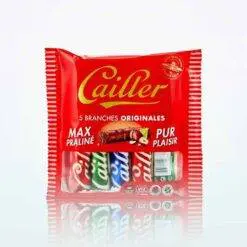The Rise of Nicotine Pouches: A New Challenge in Youth Nicotine Use
In recent years, the landscape of nicotine consumption among adolescents has shifted dramatically. While traditional cigarette smoking has declined, a new trend has emerged: the use of nicotine pouches. These small, discreet products have gained popularity among teenagers, raising concerns among health professionals and policymakers alike.

Understanding Nicotine Pouches
Nicotine pouches are tobacco-free products that deliver nicotine through the oral mucosa. They are placed between the gum and lip, releasing nicotine over time. Brands like Zyn, On!, and Velo have become increasingly popular, offering a variety of flavors and nicotine strengths. Marketed as a safer alternative to smoking, these products have found a niche among youth seeking discreet and convenient nicotine delivery methods.
What Are Nicotine Pouches?
Nicotine pouches contain synthetic or derived nicotine, flavorings, and filler materials, but no tobacco leaf. Brands like Zyn, On!, and Velo have quickly captured market share, often offering a variety of sweet or minty flavors. These products are designed to be convenient, with no smoke, no vapor, and no need for a device—making them harder to detect and more socially acceptable, particularly among teens and young adults.
Why Are They Popular Among Youth?
Several factors contribute to the rise of nicotine pouches among younger demographics:
- Discreet Use: Unlike vaping or smoking, pouches can be used almost anywhere without drawing attention.
- Flavors: Appealing flavor profiles, such as citrus, mint, or berry, mask the harsh taste of nicotine.
- Perception of Safety: Since they’re tobacco-free and smokeless, many users mistakenly believe nicotine pouches are harmless.
- Accessibility: These products are often sold over the counter, sometimes with minimal age verification, making them easy to obtain.
Social media and influencer marketing have also played a role, with some users glamorizing pouch use in ways that echo early e-cigarette marketing strategies.
Health Risks and Regulatory Gaps
While nicotine pouches may lack the tar and toxins associated with smoking, they are far from risk-free. Nicotine is highly addictive and can harm adolescent brain development, affecting memory, attention, and mood regulation. Early exposure to nicotine also increases the likelihood of long-term addiction and use of other tobacco products.
The Surge in Youth Usage
Recent studies have highlighted a concerning rise in nicotine pouch use among teenagers. Data from the Monitoring the Future survey indicates that lifetime use among 10th and 12th graders increased from 3.0% in 2023 to 5.4% in 2024. Additionally, past-12-month use rose from 2.4% to 4.6%, and past-30-day use from 1.3% to 2.6% during the same period. This uptick is particularly notable among male, non-Hispanic white, and rural-dwelling teens, mirroring demographics traditionally associated with smokeless tobacco use.
Health Implications
While nicotine pouches are marketed as tobacco-free, they are not without health risks. Nicotine is a highly addictive substance that can adversely affect adolescent brain development, impacting areas responsible for attention, learning, and memory. Moreover, the use of nicotine pouches has been linked to oral health issues, including gum irritation and potential lesions. Some studies have also found hazardous substances in certain pouch products, raising concerns about long-term health effects.
Marketing and Accessibility
The appeal of nicotine pouches among youth is partly attributed to targeted marketing strategies and social media influence. Flavored options and sleek packaging make these products attractive to younger demographics. Despite age restrictions, the ease of online purchasing and lack of stringent enforcement have made it relatively simple for underage individuals to access these products.
Regulatory Responses
In response to the growing concern, some jurisdictions have implemented stricter regulations. For instance, Queensland, Australia, has classified nicotine pouches as illicit, imposing hefty fines for their sale and possession. In the United States, while the FDA has authorized the marketing of certain nicotine pouch products, it continues to monitor their impact on youth and may adjust regulations accordingly.
Conclusion
The rise of nicotine pouch use among teenagers presents a new public health challenge. While these products are marketed as safer alternatives to traditional tobacco, disposalvape their potential health risks and appeal to youth necessitate careful scrutiny. Comprehensive strategies, including education, regulation, and enforcement, are essential to address this emerging trend and protect the health of young individuals.










